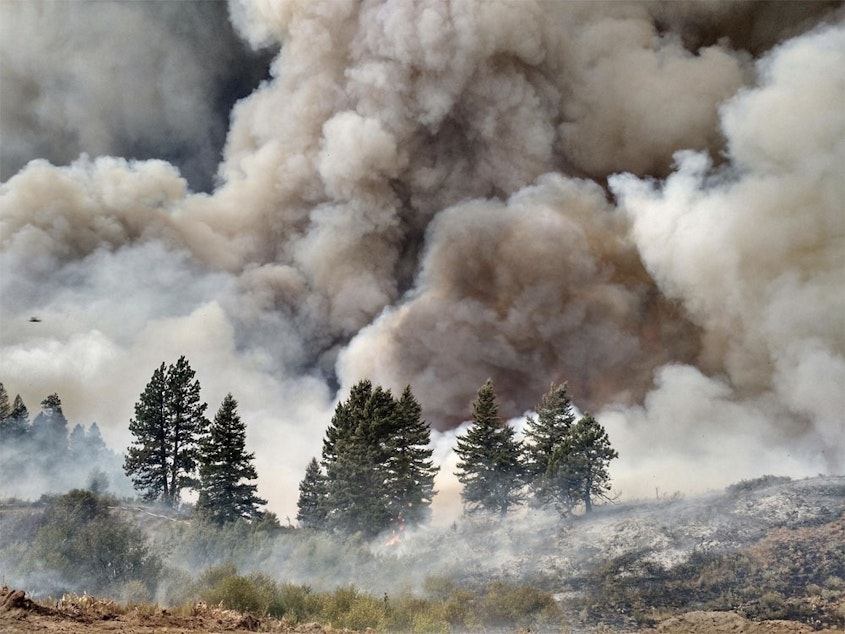Artificial intelligence helps Northwest scientists better understand wildfire emissions

To better understand fire emissions under worst-case climate scenarios, scientists at Pacific Northwest National Laboratory first taught a machine to predict the past. That artificial intelligence is helping scientists better understand wildfire emissions in the Northwest.
The scientists input climate change components into an explainable artificial intelligence model. Then, they trained the model to learn patterns.
When the AI model could predict what happened in previous fire seasons, the scientists knew they could trust it to predict the future, said lab fellow Ruby Leung.
“Advances in machine learning now allow us to really focus on a large number of factors and also they’re complex, non-linear relationship,” Leung said.
With the AI model, the scientists found climate change will increase temperatures, decrease soil moisture and change land use. Those main factors likely will contribute to more unhealthy fire emissions in the future, she said.
Sponsored
Moreover, the machine learning model showed those unhealthy fire emissions could increase drastically. The study found wildfire emissions could increase in the West by up to 186% over the coming decades.
Typically, people think of machine learning as a black box, said Sally Wang, a data scientist at PNNL in Richland, Washington. The view is that the technology can make good predictions, but scientists don’t know what’s going on. That’s not the case with this explainable artificial intelligence, she said. Scientists train machine learning models to make similar decisions as people do.
“With the explainable AI, we can understand: ‘Oh, (when) the machine learning projects future fire emissions increase, it’s because it sees temperatures increasing,” said Wang, as an example.
The AI helps scientists to better understand what areas to focus on to help reduce wildfire emissions, Wang said.
That increase in wildfire emissions has a lot of implications, Leung said.
Sponsored
One big implication could be in the realm of public health, Leung said. The fine particulates emanating from wildfire emissions can lead to a variety of health problems, especially for people with lung and heart diseases.
“There are multiple sectors in society that could make use of this type of information,” she said.
That’s why it’s important to combine information about the cascading effects of climate change, wildfires and smoke, she said.
In the future, Wang said, she wants to use the AI model to understand further how human factors contribute to fire activities. [Copyright 2023 Northwest News Network]
